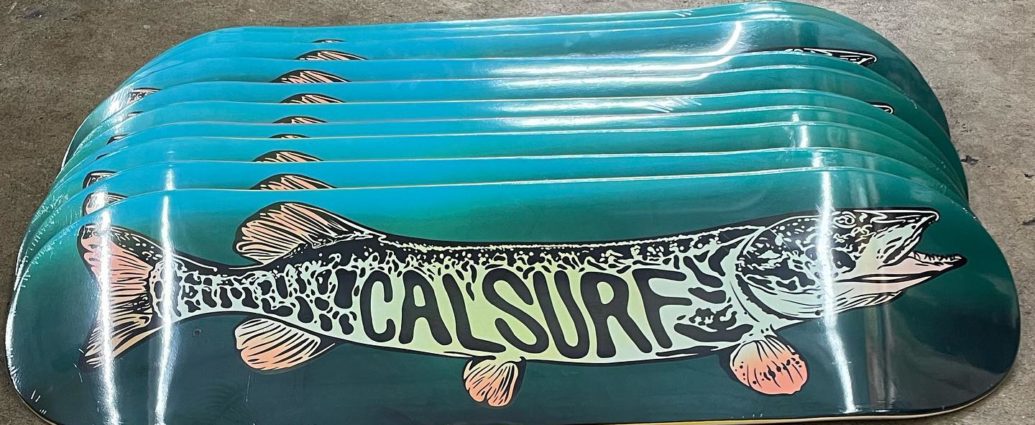Words by Sanaphay Rattanavong
The long-time owner of Cal Surf in Uptown Minneapolis, a linchpin of Twin Cities skateboarding (and snowboarding), Scott Oreschnick, says that yes, he does skateboard to work at the shop when possible. “Of the ten tricks I know,” he says, “I can probably still do about six of them. I don’t see myself as needing progression or anything, I do it on my own terms and go have fun.”
Cal Surf was established in 1988, and Oreschnick joined the shop two or three years after, finally buying it in 1998. While some things remain the same—such as their focus on skateboarding, the needs of skaters and skating apparel—the shop continues to roll along to the constancy of change.
Throughout the ‘80s and ‘90s, skaters either endured the winter not doing what they loved or took up snowboarding. And people generally came to the area to snowboard, since the Twin Cities holds snow in the winter. Cal Surf met their needs. The new millennium saw the opening of indoor skate parks, Oreschnick explains, so that skaters switched from snowboarding during the winter to skateboarding, which was also much kinder on their pocketbooks.
“We saw a big shift when the X Games happened [at U.S. Bank Stadium],” Oreschnick says. “Skateboarding was getting on TV.”
He saw his customer base shift, with more moms supporting their kids. “The non-traditional sport kid, that’s still our biggest group—they’re not into team sports, they like the individual pursuits,” he says. “A lot of kids that are focused on art, computer science, more things that are individually driven.”
With the rise of the e-commerce giants, Cal Surf’s inventory game had to adapt, freeing up the second floor of the shop, which they converted to a community space for art shows, skateboard video premiers, pop-up shops for people starting their own brands, and so on. Given the shifting landscape of Uptown and evolving demographics, he says they want to give their customers more reasons to show up at the store, to come back. “It’s not just product here—we support our consumers and give them opportunities in the store so they can bring their friends around and say, ‘Hey, that’s why I engage in this place.’”
And, of course, the pandemic had an impact. “Especially with COVID we saw a big shift, because all the team sports were canceled,” says Oreschnick. People sought out an alternative. He observed during this time a shift in clientele, seeing more LGBTQ customers and a dramatic increase in racial diversity. “It was really enriching in the sense that some of these groups weren’t taking the traditional path of skateboarding where you’re going to go prove yourself at the local spot…they’re all participating on their own level and doing things a little differently…it was interesting to see it wasn’t just about competition.”
As for the future of skating, Oreschnick sees the rise of girls and women, noting the young ages of the Olympic medalists for skateboarding in Tokyo. “We’re seeing better skateparks built, we’re seeing the Olympics, you have the X Games …there’s both men’s and women’s competitions…so we’re seeing a larger increase in women participants than on the male side…the competitions are matching in that there aren’t different sized obstacles for men and women or different times, it’s the exact same contest taking place.”
Inescapable changes in technology and information access has also affected the world of skating, he says, noting the quick progression of young skaters these days. “My skill set can’t match any of the kids coming out today,” he admits matter of factly. “Just the access to data you have now to be able to learn a kickflip, you can see 4,000 different versions on YouTube.” Coming up, Oreschnick had neither YouTube nor digital SLR cameras to capture the inner contours of tricks. “In Minnesota, there were twelve skaters when I started [that I knew]. Everything just went a lot slower back then.”
With one of his sons now working at Cal Surf, Oreschnick gets to witness this sped-up progression up close and from different angles. “I get to vicariously watch him go through everything I went through,” he says, with a hint of contentment.


Comments are closed, but trackbacks and pingbacks are open.